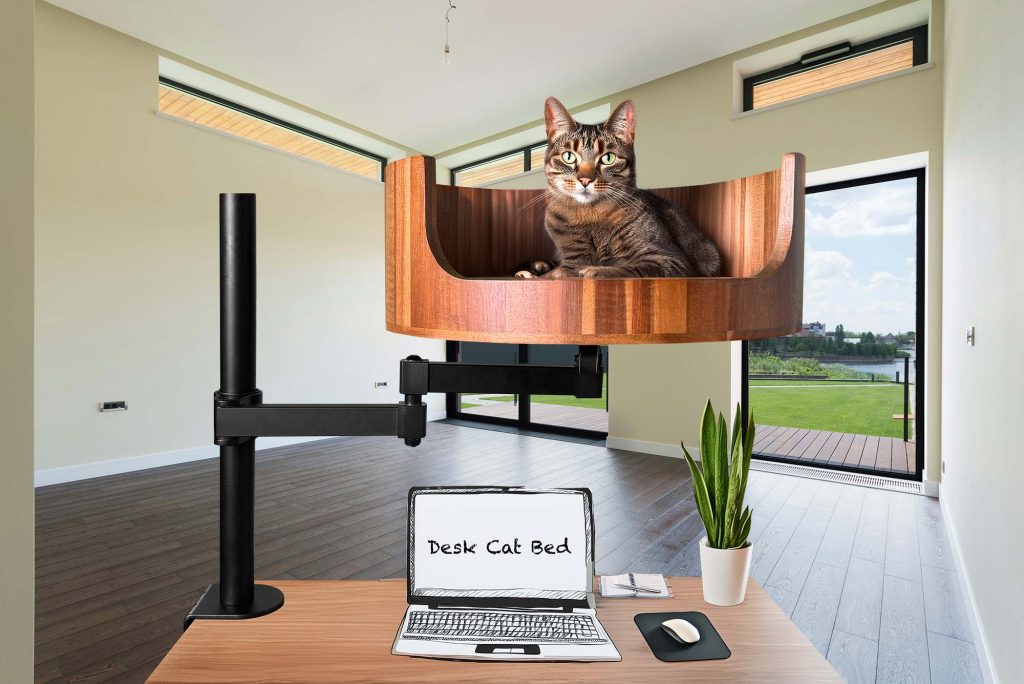Cats are fascinating creatures with a myriad of behaviors that can be difficult to interpret. One common behavior that often leaves cat owners puzzled is the wagging of their tail. While dogs wag their tails to express excitement or happiness, the reasons behind a cat’s tail wagging are quite different. Understanding feline behavior is crucial in building a strong bond with your furry friend and providing them with the care and attention they need.
In this article, we will explore the various reasons why cats wag their tails, as well as what different types of tail movements may indicate about their mood and intentions. From playful flicks to rapid swishing, each tail movement can give us valuable insight into what our cats are feeling at any given moment. By gaining a better understanding of our feline friends’ behavior, we can learn how to communicate with them effectively and create a harmonious environment for them to thrive in. So, next time you notice your cat wagging its tail, you’ll have a better idea of what it might be trying to tell you.
1. A cat wagging its tail is a common behavior that can indicate different emotions such as excitement, fear, or aggression.
2. Understanding a cat’s body language, including tail movements, can help to interpret their mood and prevent potential conflicts or injuries.
3. Cats may also wag their tails in response to environmental stimuli or to communicate with other animals.
4. It is important for cat owners to observe their pet’s tail movements along with other behaviors to better understand and respond to their needs.
5. Consulting with a veterinarian or animal behaviorist can provide further insight into a cat’s tail wagging behavior and overall well-being.
How Cats Communicate Through Tail Wagging
Cats use their tails to communicate a wide range of emotions and intentions. A slowly wagging tail indicates that a cat is relaxed or content, whereas a rapidly twitching tail can signal agitation or aggression. By observing a cat’s tail movements, pet owners can better understand their feline companion’s mood and needs.
Common Reasons for Tail Wagging in Cats
There are several common reasons why a cat may wag its tail. For example, a cat may wag its tail when hunting or stalking prey, as it helps to maintain balance and coordination during these activities. Cats may also wag their tails when feeling anxious, frustrated, or overstimulated. Understanding the context in which a cat is wagging its tail can provide valuable insight into its emotional state.
Health Issues Related to Tail Wagging in Cats
In some cases, excessive tail wagging in cats may be a sign of underlying health issues. For example, cats may exhibit abnormal tail movements if they are experiencing pain, discomfort, or neurological problems. It is important for pet owners to monitor their cat’s tail wagging behavior and seek veterinary attention if they notice any concerning changes or symptoms.
Training and Discipline for Curbing Excessive Tail Wagging
Pet owners can help modify their cat’s tail wagging behavior through training and discipline. Positive reinforcement techniques, such as rewarding calm behavior, can help encourage cats to exhibit less excessive tail wagging. Additionally, providing appropriate outlets for play and exercise can help alleviate stress and reduce tail wagging associated with boredom or pent-up energy. Consistent training and patience are key to effectively addressing behavioral issues related to tail wagging in cats.
Desk Cat Nest FAQ
Why do cats wag their tail?
Cats wag their tail as a way of communicating their feelings and emotions. It can indicate excitement, aggression, or curiosity, depending on the context and speed of the wagging. It’s important to pay attention to other body language cues to understand what your cat is trying to convey.
Is tail wagging in cats always a sign of aggression?
No, tail wagging in cats is not always a sign of aggression. While fast and aggressive tail wagging can indicate irritation or aggression, other types of wagging can signal different emotions. Slow and gentle movements can indicate a relaxed or curious cat.
Can Desk Cat Nest help to reduce tail wagging in cats?
Desk Cat Nest provides a comfortable and safe space for cats to relax and feel secure, which can help reduce stress and anxiety that may lead to excessive tail wagging. By giving your cat a cozy place to retreat to, you can help them feel more calm and content.
How should I interpret my cat’s tail wagging?
Interpreting your cat’s tail wagging should be done in conjunction with other body language cues. Pay attention to your cat’s ears, eyes, and overall posture to get a better understanding of their emotions. If you are unsure, it’s best to consult with a veterinarian or a cat behavior expert.
In conclusion, providing your cat with a comfortable and secure space like a Desk Cat Bed can help reduce stress and anxiety, ultimately leading to a calmer demeanor and decreased tail wagging behavior. The raised edges and soft padding of the bed offer a sense of security and comfort for your feline friend, encouraging relaxation and reducing the need for excessive tail movement. Investing in a Desk Cat Bed is a valuable choice for both you and your cat, as it not only provides a cozy resting spot but also promotes overall well-being and behavioral improvements. Give your cat the gift of a peaceful sanctuary with a Desk Cat Bed today.


